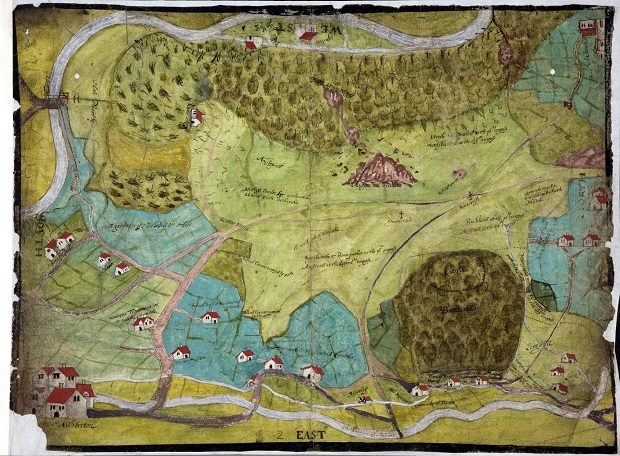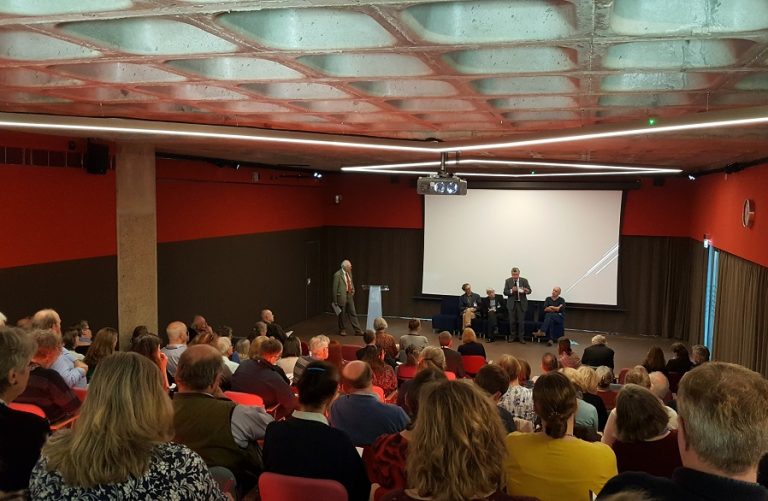The Manorial Documents Register (MDR) is an index to the location of surviving English and Welsh manorial records held in public and private hands.
The Register: past and present
The programme to revise, update and computerise our paper-based register began twenty five years ago, with records relating to Wales being the first to be made available online back in 1997. Work continues across the English counties, in collaboration with external partners, and in 2018 two more counties were added to the Manorial Documents Register within Discovery: Herefordshire in March and Northumberland in September.
The online Manorial Documents Register is far more detailed and accurate than the original paper indexes, improving both the quality and quantity of the information. This benefits researchers wherever they are based in the world, enabling them to search for manorial records by manor, parish, document type and date.
There are five ongoing English historic county projects – Cheshire, Kent, Leicestershire, Oxfordshire and Rutland. The three remaining English county projects will be starting in 2019 with the first being Lincolnshire in March, followed by Cornwall and Durham later in the year. View a map showing how much of the country has been covered and which counties remain.
To recognise and promote the on-going project, The National Archives, in collaboration with the Manorial Documents Register (MDR) Advisory Panel, hosted a successful one-day conference entitled Manorial Documents: past, present and into the future on Tuesday 25 September 2018. The conference offered an opportunity to celebrate the work that goes into the creation and maintenance of the Manorial Documents Register, as well as the research that it enables, and to look forward to how we can continue to unlock the potential that exists in exploiting the rich contents of manorial documents.

- MPB 1/7, sketch of the manor of Ashburton, Devon 1605
The conference
The conference had generated significant interest, and the day began with a buzz of anticipation. Following a warm welcome from Dr Anna Sexton and Professor Paul Harvey outlining some of the background of the Manorial Documents Register and the legal and cultural importance of manorial documents, Professor Christopher Dyer delivered a lively keynote address. Here he outlined some of the interesting stories these ‘dull and dry’ documents can tell. The particular focus was on how manorial documents, especially court rolls, were used to establish power and control but nevertheless left some room for argument and negotiation. A lot can be learned from these documents about the activities and relationships in a village community.
The first panel looked more broadly at how manorial documents have been used in an inter-disciplinary context, with papers considering demographic, archaeological as well as historical perspectives. Manorial documents can allow us to map out customs and behaviours over time, help explain transition of land and dwellings, and chart responses to crisis events. In essence they provide a fascinating insight into changing life and landscape over time.

- MR1/306, Map of the Manor of Sturry, Kent 1643
The break for lunch included an opportunity to view an engaging document display of some of the manorial records held at The National Archives, some showing surprising colour and creativity, ranging from the twelfth to the twentieth centuries.
The focus of the second panel shifted to the Manorial Documents Register itself. Presentations reflected on how the project had moved from the 1920s paper register to the online version of today, how manorial documents and the development of the Manorial Documents Register have contributed to other project outputs, such as the Victoria County History research and the writing of parish histories, and the way the Manorial Documents Register has advanced opportunities for more personal explorations into family history and local heritage. While not yet complete, the Manorial Documents Register has already contributed to projects taking forward our knowledge of culture and heritage and even promoting personal wellbeing.
The second panel was followed by a roundtable discussion on what’s next for the Manorial Documents Register. This considered projects currently underway as well as generating discussion on new uses for the Manorial Documents Register and innovative ways to take the project and the study of manorial documents forward. There was particular focus on community engagement and ways of making these challenging documents more accessible, ranging from recreations of manor courts, the creation of online learning tools and training volunteers, to digitisation and making greater use of linking and visualising the highly structured data of the Manorial Documents Register.
The day provided an interesting insight into the varied inter-disciplinary uses of manorial documents and the Manorial Documents Register and the exciting potential the Register has as a basis for future endeavours.

- Presentations at the Manorial Documents Register one-day conference, Manorial Documents: past, present and into the future, held at The National Archives, Tuesday 25 September 2018
Conference delegates commented:
The range and depth of knowledge of the speakers was very impressive. It was inspiring to know how many different topics could be researched using manorial documents.
The programme was full and engaging – there was an unexpected but welcome buzz in the room throughout!
It was an inspiring day, showing the value of manorial records and how they need to be used more widely.
The suggestions about how to use manorial records for community engagement was inspiring.
Looking forward to 2022!
The Conference has been recorded, and this will be published on our website as a set of podcasts in 2019, to allow access to those who were unable to attend. Similarly, there are plans in place to publish the proceedings of the conference. The conference was also live tweeted by Victoria County History and others on Twitter.
The Future of the Manorial Documents Register
There will be a second conference at The National Archives in 2022, to coincide with the centenary of the 1922 Law of Property Act, to showcase completed and ongoing research and to provide an overview of the entire Manorial Documents Register project phase. Alongside this is a proposed series of nationwide events to celebrate the completion of the individual county projects and to highlight relevant research activity.
Our long-term aims around the Manorial Documents Register are to increase audiences and stimulate new uses of the Register, leading to new types of research into or using manorial records, and in doing so expanding and broadening the understanding of the importance and value of manorial records and the manorial system.
A Manorial Documents Research mailing list has been established and if you would like your contact details to be added to the list, please email mdr@nationalarchives.gov.uk.